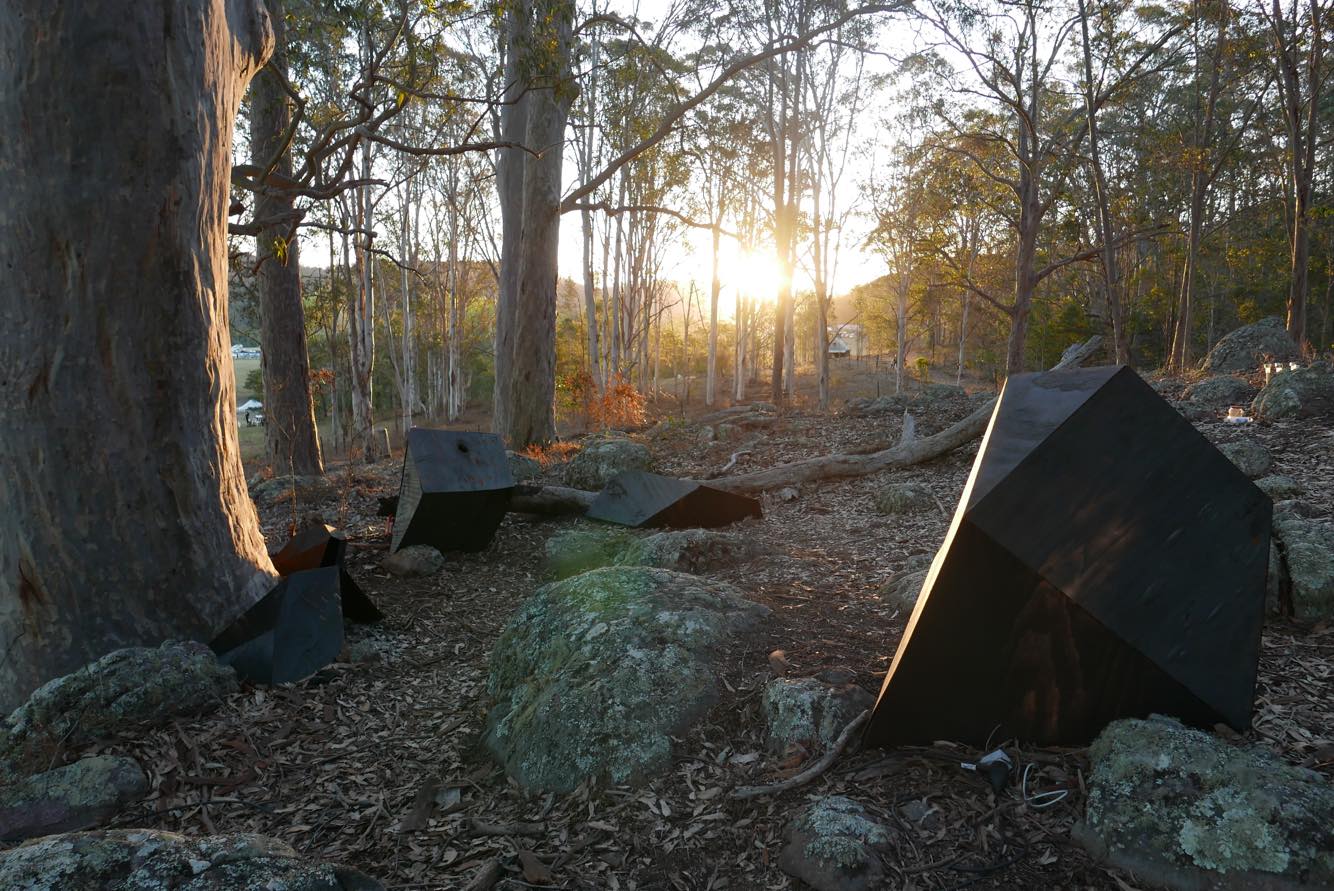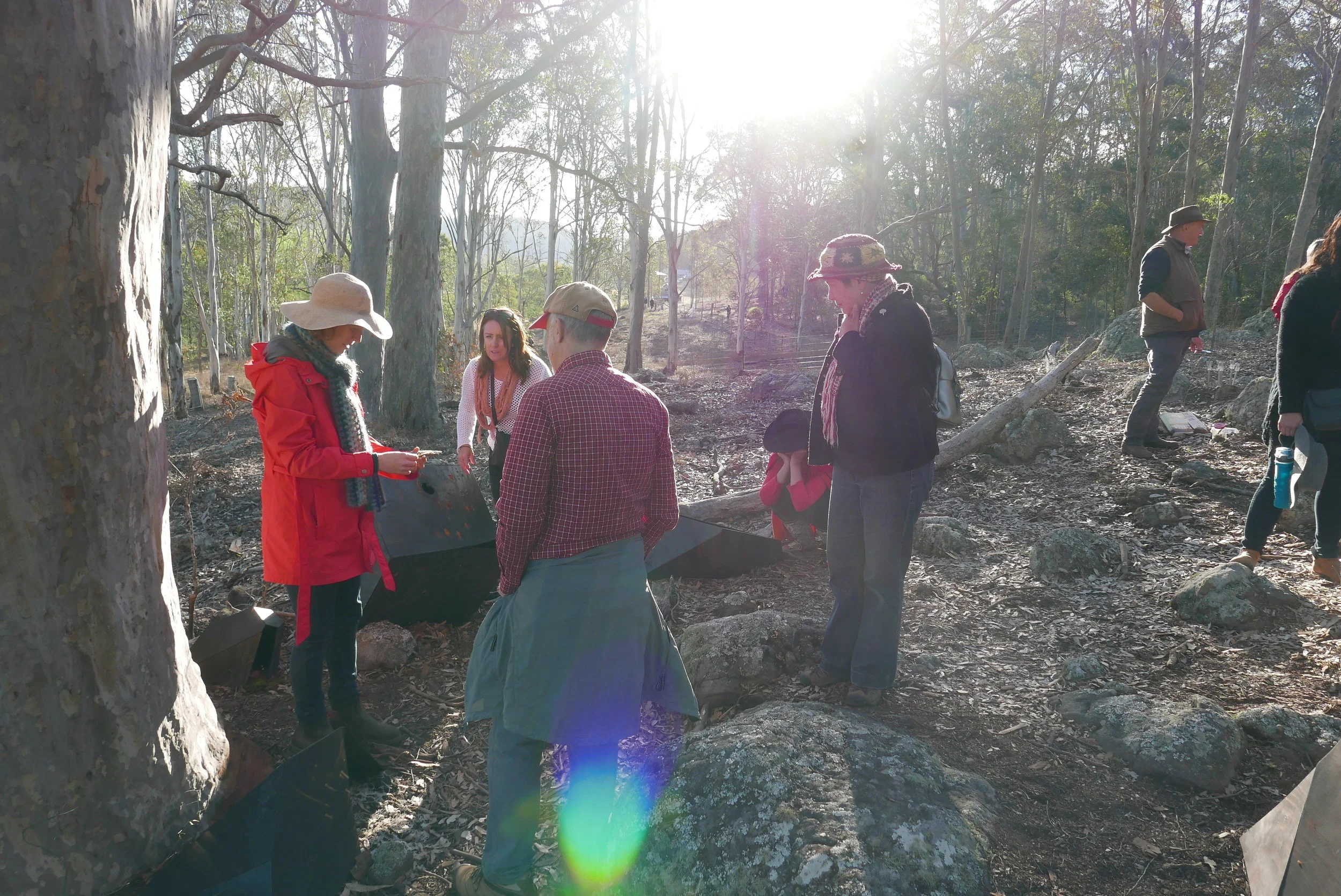by Jono Bolitho
Siteworks is an annual spring event at Bundanon Trust on the Shoalhaven River that brings scientists, artists and community voices together to share knowledge and ideas arising from the Bundanon sites through discussions, presentations and experiences. This year, the theme for Siteworks was micro. Lucky for Laura Fisher and myself, as this fit our “An Artist, A Farmer and a Scientist walk into a bar…” project perfectly. Humus:Human was selected for presentation at the festival and Laura and I were fortunate enough to travel down and spend several days making and presenting the work.
The whole experience has got me thinking about the overall direction of our project— interstitial is a word that springs to mind. The way I define it is that sort of fuzzy in-between state between two things. In ecology for example, it might refer to microscopic organisms living between the grains of sand on a beach. This same definition can also apply to concepts, for example the fuzzy spaces that exist between art and science, a household sponge and a landscape, or humus and humans.
Could exploring and drawing parallels within these kind of spaces lead to new discoveries and ways of thinking about the world? What emerges from the intersection of seemingly disparate phenomena? What the hell is humus anyway? Our project sought to ask questions rather than propose answers. For me this was a refreshing and important realisation: our project is an ongoing, open-ended, collaborative experiment, rather than a polished end-product.
Rewind to a few weeks back. I wake up with a message from Glenn, reading: “Flocculated, amorphous, gel-like, macro-molecule contains solid colloidal particles and at the same time being interwoven with the inorganic and mineral fractions of the soil matrix. [Trying to represent] this beautiful amazing subject which the world depends on is so mystifying because of all these qualities. What a challenge!”
Naturally I got a burst of inspiration and excitement, tinged with confusion. I asked myself, “How the floccule would I be able to represent all of these marvellous properties through one artwork?”
“The most beautiful thing we can experience is the mysterious, it is the source of all true art and science.” - Albert Einstein
I have always maintained the belief that artists, architects, filmmakers, designers and musicians can be pretty damned skilled at illuminating scientific concepts and crafting powerful metaphors that help us understand the complexity of the world around us. From the beginning we’ve always talked about making an immersive model, a work that is as didactic as it is poetic. Laura and I donned our proverbial lab coats and pressed on developing our five prototypical experiences that each espoused a physical characteristic of humus. We found ourselves experimenting with soil sensors, climatic soundscapes, churning buttons, mycelial fabric and luminescent agar hemispheres. Each of these would be housed in geometric, modular plywood structures. We hired a flamethrower to char the outsides of these forms, which was primarily for fun but also just so happened to give each one a dark, silvery sheen indicative of the richness of healthy humic matter. The forms were also inspired by the physical properties that gives humus the ability to hold four times its weight in water and effectively sequester carbon dioxide from the atmosphere.
The day of the installation. Carting our giant charred plywood structures, we got to work composing them in the tranquil setting. It struck us immediately how well-suited our installation was to its environment. Dotted with charred tree trunks, twisting gums, a scattering of decaying leaf-litter and ancient lichen covered stones, we nestled the structures into the landscape itself.
The following day, Glenn, Laura and I stationed ourselves at the work to chat to the steady trickle of people flowing through. We found ourselves constantly answering questions, illuminating details and guiding people through our collaborative process. It was interesting to find that people were equally, if not more interested in our “Artist Farmer Scientist” collaboration than the work itself. Glenn’s charisma and intimate understanding of the properties of humus had people hanging off every word, and we were able to point to the models when necessary for visual clarification.
I left feeling very appreciative of an event like Siteworks, that encourages a format in which people are able to engage in an open-ended conversation. For me personally, it’s the first time I’ve exhibited something that exists not as a resolved installation, but an invitation to engage with the process. We don’t have all the answers, but Humus:Human isn’t about answers. The value of the collaboration between Glenn, Laura and I is exactly that, our collaboration. Enticing and encouraging people to draw their own links and discover something new is a journey that the three of us find stimulating and incredibly important.
















